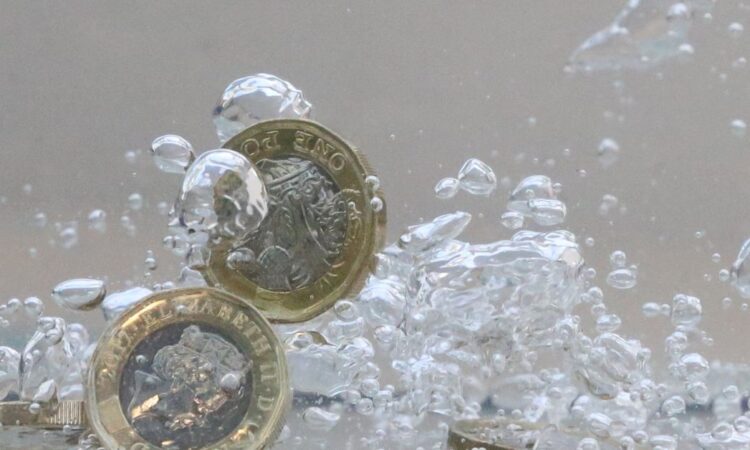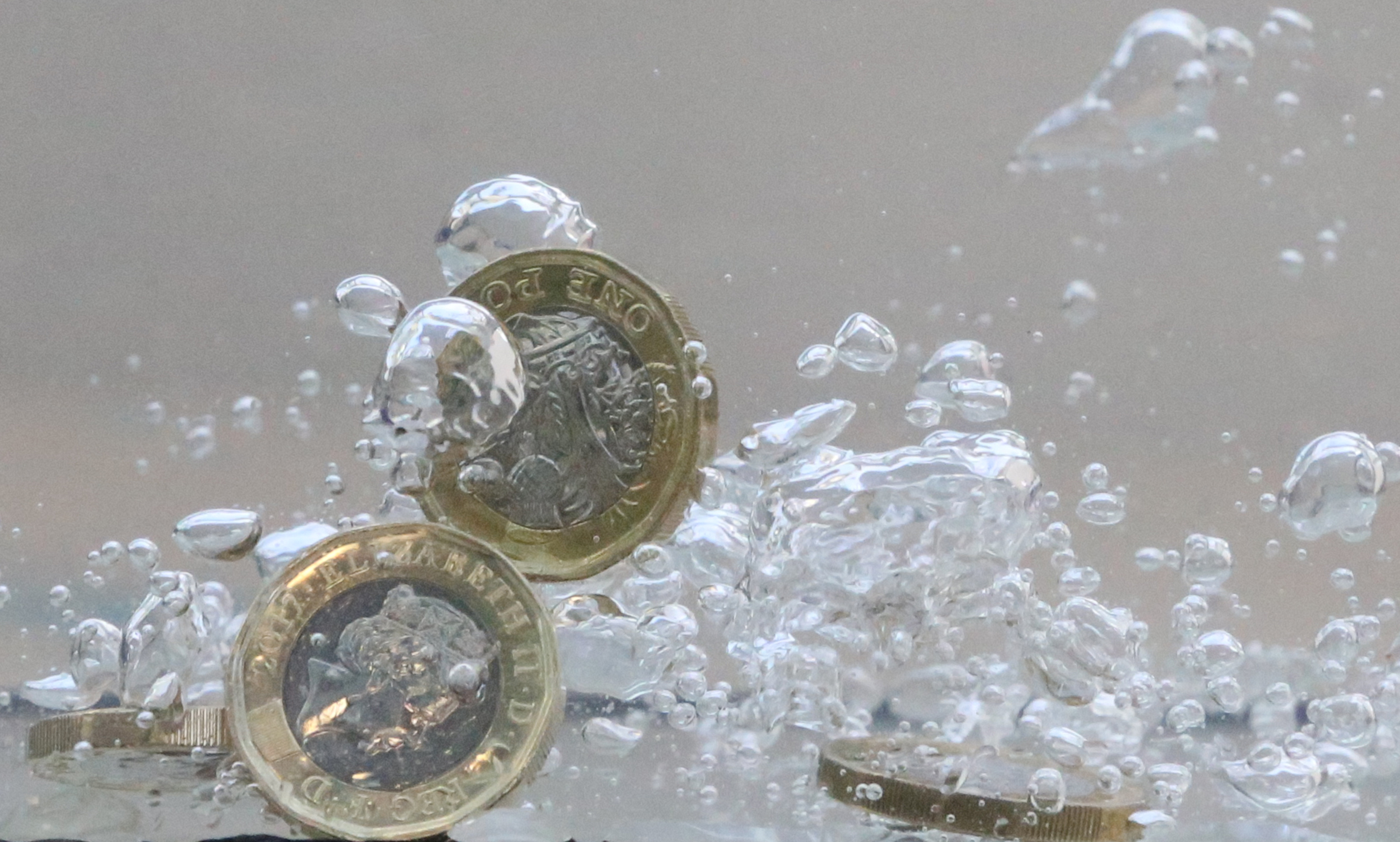

UK pound coins plunge into water in this illustration picture, October 26, 2017. REUTERS/Dado Ruvic/Illustration/File photo Acquire Licensing Rights
LONDON, Nov 2 (Reuters) – British bond yields were on track for their biggest fall in months on Thursday after the Bank of England held interest rates steady and painted a gloomy picture of the UK economy.
Bond yields had already been trading lower after the Federal Reserve kept interest rates on hold on Wednesday and the U.S. Treasury said it planned to issue less longer-dated debt than previously expected.
Yields on benchmark 10-year UK bonds , also known as Gilts, fell as low as 4.318% and were last 15 basis points (bps) lower on the day at 4.35%, down around 4 bps from before the decision.
The drop put the yield on track for its biggest one-day fall since August. Yields move inversely to prices.
The Bank left borrowing costs unchanged at 5.25% and published forecasts which showed the British economy was likely to skirt close to a recession and flat-line in the coming years.
Sterling climbed after the BoE’s decision, adding to its rally on a day when the fall in U.S. yields was weighing on the dollar. It was last up 0.51% at $1.2212, having traded around 0.35% higher before the decision.
A fall in global bond yields helped stocks, with Britain’s FTSE 100 stock index (.FTSE) last up 1.54%, from 1.2% higher before the BoE.
The Monetary Policy Committee (MPC) voted 6-3 to keep the Bank Rate on hold, in line with economists’ expectations in a Reuters poll.
“The MPC’s latest projections indicate that monetary policy is likely to need to be restrictive for an extended period of time,” the BoE said, adding that further tightening is a possibility.
Yet James Lynch, fixed income investment manager at Aegon Asset Management, said: “I would expect the chances of getting another interest rate hike in this cycle is very low.”
“The momentum in the economy and future indicators point to lower activity… The question should now be when will the BoE cut.”
Traders in derivatives markets on Thursday moved to fully price in an interest rate cut from the Bank of England in August 2024, having seen an 80% chance before the BoE meeting.
Ed Hutchings, head of rates at Aviva Investos, said: “The BoE seems keen to push back on markets getting carried away with cuts… this should largely be supportive for the currency.”
“Medium-term however, with weaker growth and past hikes yet to feed through, we are close to all but done with interest rate hikes, which is ultimately supportive for Gilts.”
Britain’s 2-year gilt yield was little changed from before the BoE decision, trading 11 bps lower at 4.685%, after hitting its lowest since June 2023 at 4.655%.
Global bond yields have pushed higher over the last two months, driven by strong U.S. economic data that pushed the 10-year Treasury yield above 5% last week for the first time since 2007.
Yet that yield – which sets the tone for borrowing costs around the world – was last down 12 bps on Thursday at 4.657% on Thursday.
Before the Fed kept rates on hold on Wednesday, the U.S. Treasury said it would slow the pace of increases in its longer-dated debt auctions in the next three months.
Adding momentum to the fall in bond yields on Thursday was data which showed U.S. weekly jobless claims rose moderately last week.
Reporting by Harry Robertson; Editing by Dhara Ranasinghe, Kirsten Donovan and Jonathan Oatis
Our Standards: The Thomson Reuters Trust Principles.




